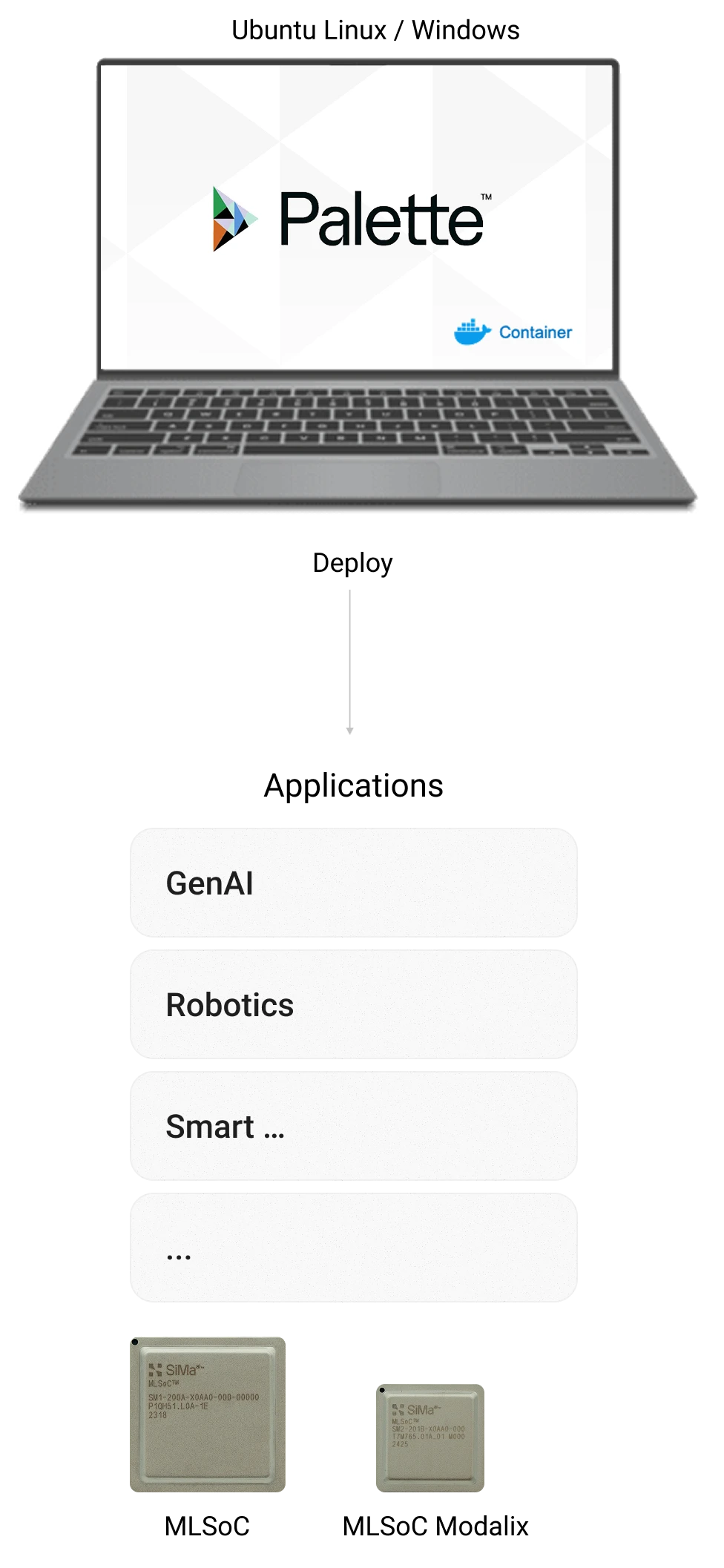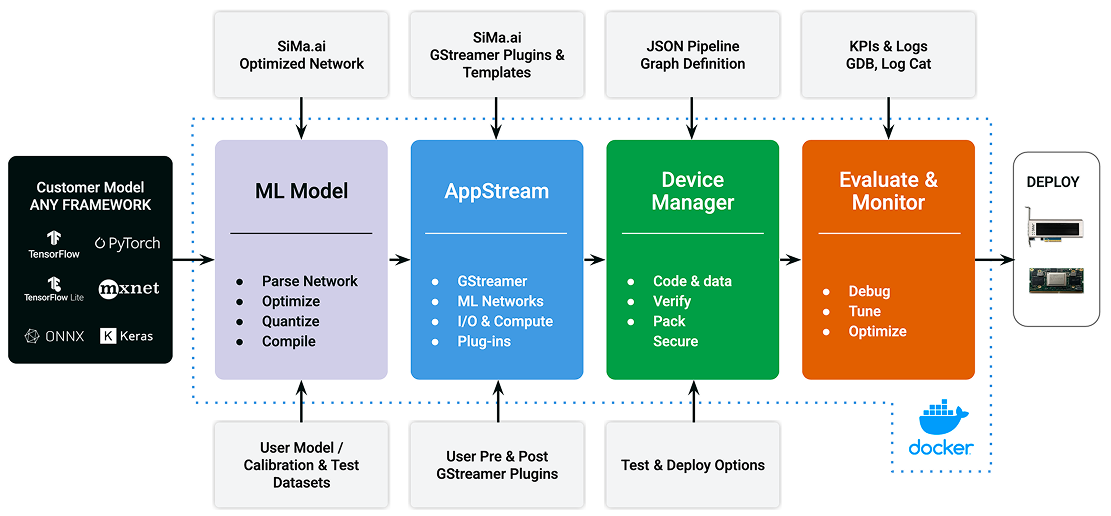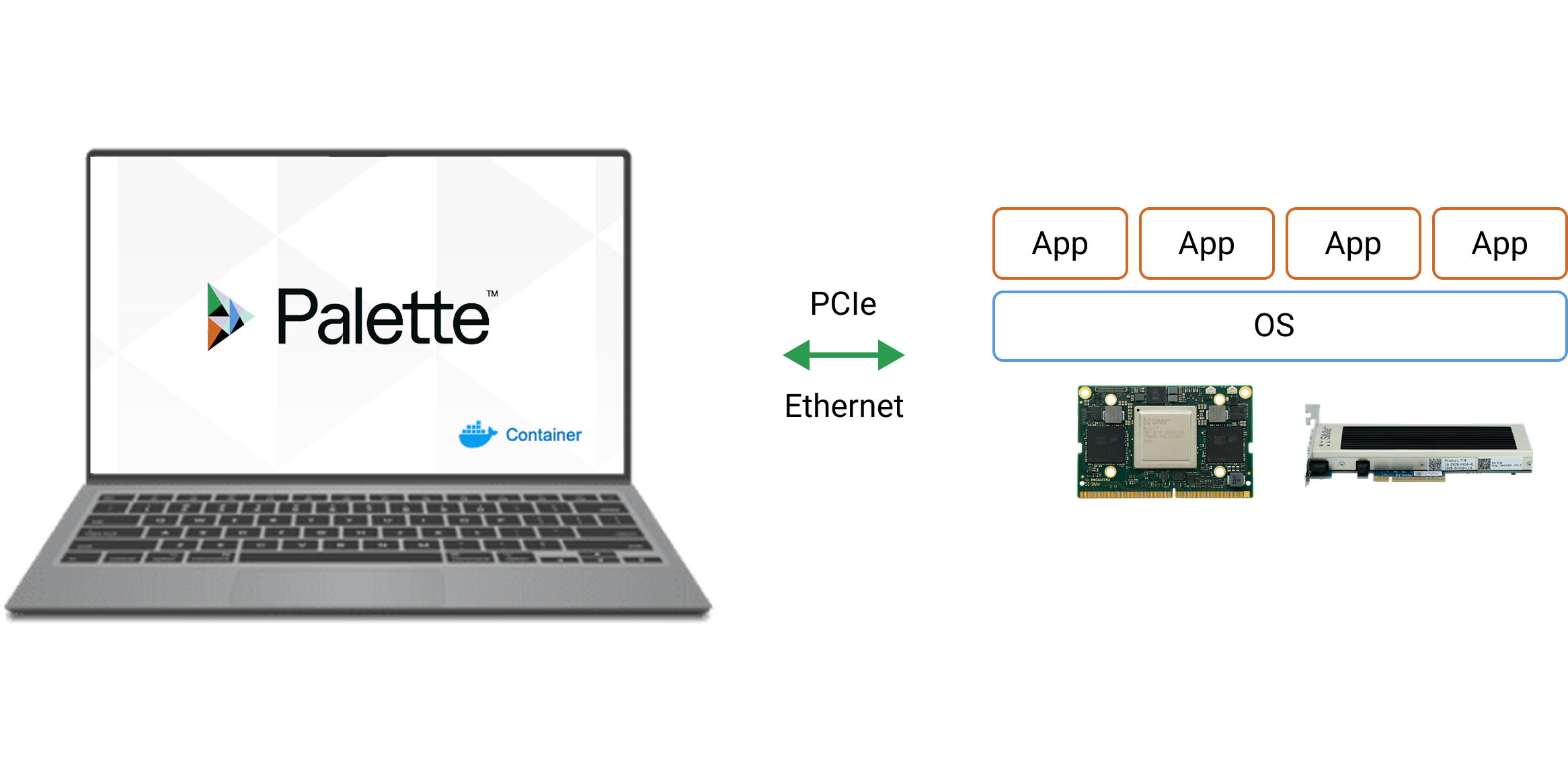Model SDK
Convert and compile your ML models for SiMa.ai Edge
CLI Tools & APIs
Integrate sensors & plug-ins
Optimized Libraries
Use pre-optimized models and templates
Dashboards
Tools to evaluate and monitor performance
Explore All Features


Palette runs as a Docker container on your development machine, giving you all the tools to develop, compile, and deploy high-performance AI apps — fully integrated with your SiMa MLSoC board.
Learn More

 Learn More
Learn More
Apps
Easily deploy and manage high performance AI – one app, any SoC
Connectivity
Run your AI stand-alone, over PCIe or Ethernet – the choice is yours
OS
Choose the OS that meets your needs and time to market
Run applications directly on the board using Python or C++ APIs.
Use the board as a PCIe co-processor controlled from a host machine.
Deploy and manage devices and pipelines as standalone applications — no code needed

